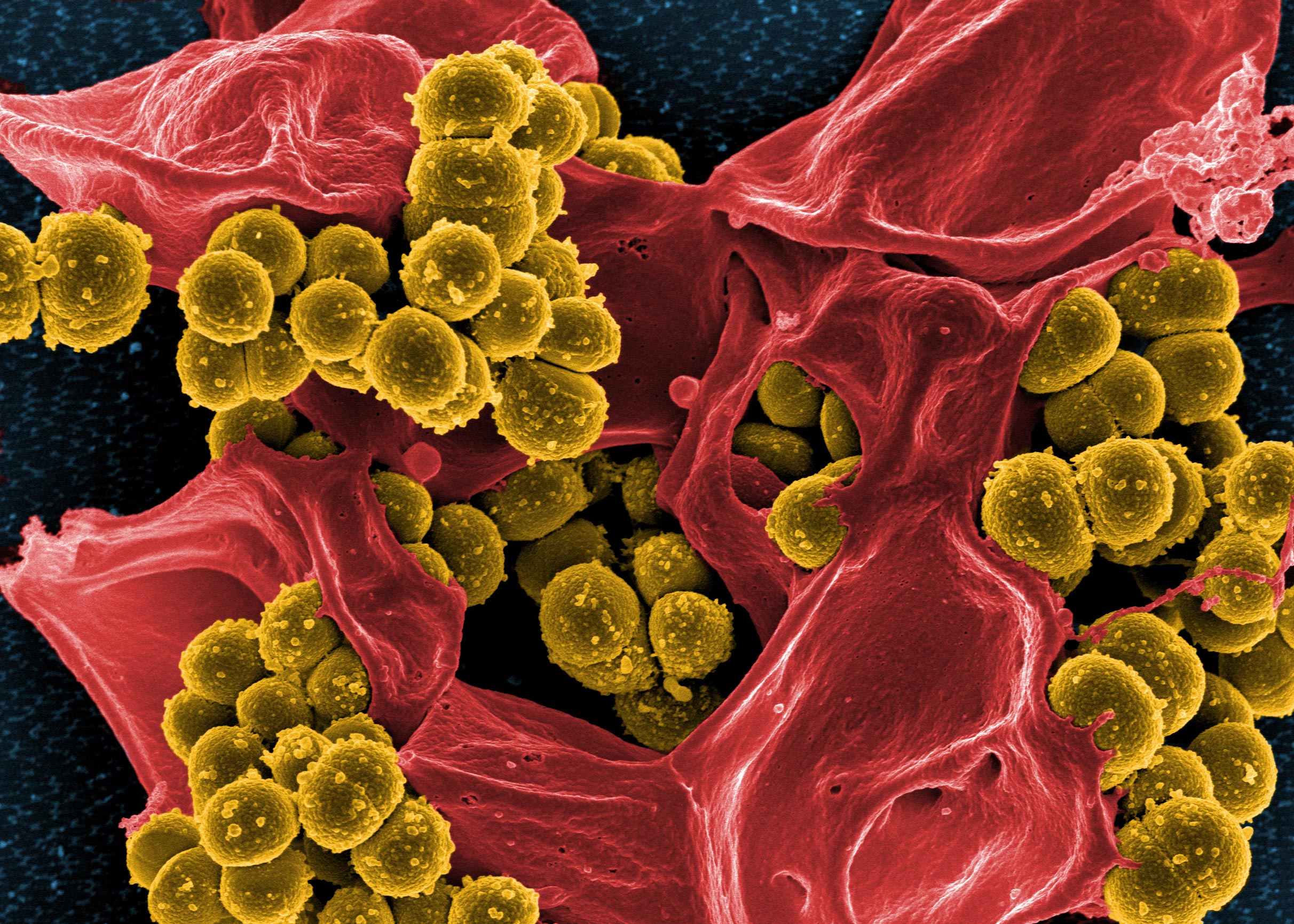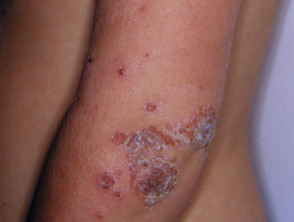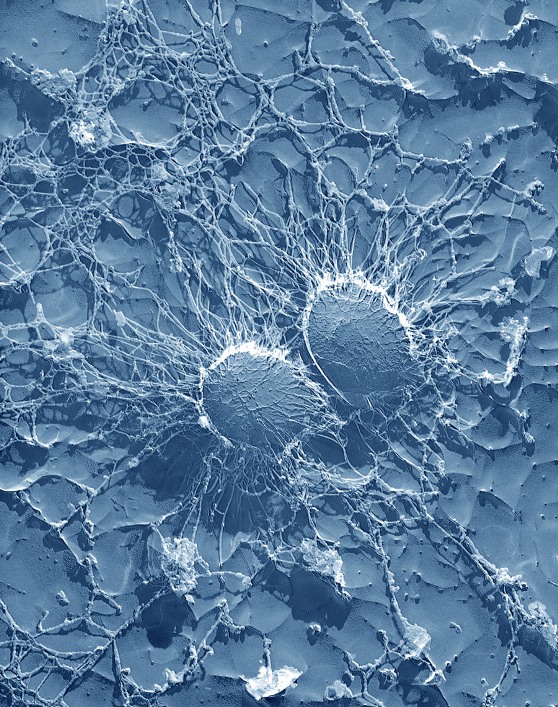The Bacteria Staphylococcus Aureus Is Harmless to Humans
However if it enters the body through a cut in the skin it can cause a range of mild to severe infections which may cause death in some cases. Staphylococcus aureus or S.

Staphylococcus From Harmless Skin Bacteria To Deadly Pathogen
Staphylococcus aureus or staph is a type of bacteria found on human skin in the nose armpit groin and other areas.

. These bacteria are often resistant to a particularly. The rate of community-associated methicillin-resistant Staphylococcus aureus S. Staphylococcus aureus causes many types of human infections and syndromesmost notably skin and soft tissue infections.
The bacterium Staphylococcus epidermidis is primarily a harmless microbe found on the skin and in the noses of humans. Genomic island that converts a harmless bacterium into a pathogen. Aureus present in the nostrils is a.
08 June 2021. Although one quarter of the US. It is a frequent cause of infections of the upper respiratory tract including sinusitis and of the skin typically abscesses as well as of food poisoning and medical device contamination.
It is also called golden staph. Staphylococcus aureus is a common colonizer of the human body. How to know if a bacteria is pathogenic.
Polymorphonuclear leukocytes neutrophils are the primary cellular host defense against S. This is the case with Staphylococcus aureus. Staphyle means bunch of grapes gram positive clusters aureus means golden grows golden on the plate Explain why Staphylococcus aureus is considered one of the most hardy and versatile pathogenic bacterium around.
Abscesses are a frequent manifestation of S. As a result its capable of causing problems in the skin and the respiratory and digestive systems. While these germs dont always cause harm they can make you sick under the right circumstances.
Present in pathogenic bacteria not in nonpathogenic. To better understand the pathogenic bacteria Staphylococcus aureus and develop more effective treatments researchers examined the Staph pan-genome the genomes of 64 different. Aureus is a common bacterium that lives on the skin or in the nose.
Aureus is the leading cause of skin and soft tissue infections such as abscesses boils furuncles and cellulitis. Staphylococcus aureus is a leading cause of human bacterial infection most notable for its ability to infect any tissue in the human host. They usually only cause an infection if they get into the skin for example through a bite or cut.
Here are some examples of pathogenic and non-pathogenic bacteria. Yet some strains of this species can cause infections in catheters artificial joints heart valves and in the bloodstream which are difficult to treat. These bacteria are often resistant to a particularly effective.
Staph is also a global public threat due to the rapid rise of antibiotic-resistant. The bacteria that cause staph infections live harmlessly on many peoples skin often in the nose and armpits and on the buttocks. Staph bacteria are usually harmless but they can cause serious infections that can lead to sepsis or death.
Around 014-015 and 600 to 700micrometer in length are beneficial and harmless to humans. Staphylococcus Aureus is the scientific name for a group of bacteria and are known as the common cause of staph infections in humans. Aureus skin and soft tissue infections and are formed in part to contain the nidus of infection.
There are bacteria that can link to a group of infections and diseases in various organs of the human body. Staphylococcus aureus is a Gram-positive round-shaped bacterium a member of the Bacillota and is a usual member of the microbiota of the body frequently found in the upper respiratory tract and on the skinIt is often positive for catalase and nitrate reduction and is a facultative anaerobe that can grow without the need for oxygen. The entrance of Staphylococcus aureus into the blood is known as septicemia or toxemia and can easily be spread to other organs.
The bacterium Staphylococcus epidermidisis primarily a harmless microbe found on the skin and in the noses of humans. Among the most common sites of S aureus infection is the skin predicated by the existence of this organism as a part of the commensal flora in up to half of the population. Staph bacteria can spread to others through.
Staphylococcus aureus staph is a type of bacteria found on peoples skin. Infections are common both in community-acquired as well as hospital-acquired settings and treatment remains challenging to manage due to the emergence of multi-drug resistant strains such as MRSA Methicillin-Resistant Staphylococcus aureus. A pathogencitiy island is a distinct region of DNA present in the genome of a ___ bacteria but absent in ___ strains of the same species.
Methicillin-resistant Staphylococcus aureus MRSA is a cause of staph infection that is difficult to treat because of resistance to some antibiotics. Staphylococcus aureus as is presents in small ruminants. Staphylococcus aureus bacteria are the leading cause of skin soft tissue and several other types of infections.
To better understand the pathogenic bacteria Staphylococcus aureus and develop more effective treatments University of California San Diego researchers examined the Staph pan-genome the genomes of 64 different strains that differ in where they live the types of hosts they infect and their antibiotic resistance profiles. Pathogenic Bacteria like Mycobacterium tuberculosis Staphylococcus Aureus Pseudomonas aeruginosa Burkholderia cenocepacia mycobacterium avium. Digitally colorized scanning electron microscopic image of Staphylococcus aureus bacteria mustard-colored enmeshed within a human white blood cell red-colored.
The bacterias grape-like appearance when examined under a microscope led to its name from the Greek Staphyle bunch of. NIAID The bacterium Staphylococcus epidermidisis primarily a harmless microbe found on the skin and in the noses of humans. Consequently this microorganism can cause these conditions.
Aureus also known as MRSA blood stream infections increased by 140 per cent --. Endocarditis an infection causing the interior lining of the heart to be diseased can lead to complicated heart. Staphylococcus Aureus was first discovered in 1880 in the pus from a surgical abscess.
Carried in the nasal passages by up to 30 of humans Staphylococcus aureus is recognized to be a successful opportunistic pathogen. In most situations S. This effort published June 6 by PNAS.
Population live with the bacteria and never get sick having S. Metabolically versatile facultative anaerobe can grow over a wide temperature range halophilic antibiotic resistant. Aureus usually acts as a.
Staphylococcus aureus is a major bacterial human pathogen that causes a wide variety of clinical manifestations. Sharing things like towels or toothbrushes. This is the organism that is responsible for one type of bacterial pneumonia and is serious indeed.
Tick pyemia of lambs. Yet some strains of this species can cause infections in catheters artificial joints heart valves and in the bloodstream which are difficult to treat.

Microbe Made Molecules May Be Future Drugs Microscopic Photography Microscopic Scanning Electron Microscope

Distinguishing Deadly Staph Bacteria From Harmless Strains


No comments for "The Bacteria Staphylococcus Aureus Is Harmless to Humans"
Post a Comment